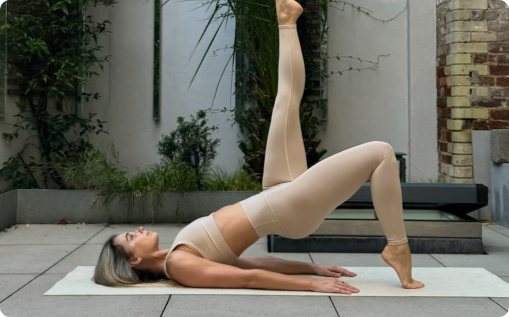What happens to your abdominals during pregnancy and childbirth?
During pregnancy, your body undergoes significant transformations to accommodate the growing baby. One of the most impacted areas is the abdominal muscles, specifically the rectus abdominis (these are the "six-pack" muscles that run vertically along the front of your abdomen).
As your baby grows, your uterus expands, pushing against the abdominal wall. This pressure can cause the two halves of the rectus abdominis to separate, creating a gap. This separation is essential to make room for the baby but can lead to a condition known as diastasis recti.
What is diastasis recti?
Diastasis recti is a common condition that occurs when the rectus abdominis muscles separate along the midline of the abdomen, creating a gap. This condition is typically identified by a gap of more than approximately 2 fingers between the muscles. Symptoms of diastasis recti can include:
• A visible bulge or "dome" in the abdomen, particularly when engaging the muscles.
• Lower back pain due to weakened core muscles.
• Poor posture.
• Pelvic floor dysfunction.
How to Check for Diastasis Recti
Checking for diastasis recti is a simple process you can do at home:
1. Lie on your back with your knees bent and feet flat on the floor.
2. Lift your head and shoulders slightly off the floor, supporting your head with one hand if necessary.
3. Using the fingers of your other hand, press gently along the midline of your abdomen, just above and below the belly button.
4. Feel for the edges of the muscles on either side of the midline. Measure the width of the gap with your fingers. A gap wider than about 2 fingers may indicate diastasis recti.
How to Reconnect Your Abdominals
Reconnecting your abdominals postpartum requires a combination of targeted exercises, correct posture, consistency and patience. Here are some effective steps:
1. Breathing exercises: Diaphragmatic breathing helps engage the deep core muscles. Sit or lie comfortably, inhale deeply into your diaphragm, and then exhale slowly, pulling your belly button towards your spine.
2. Pelvic tilts: This exercise strengthens the lower abdominal muscles. Lie on your back with knees bent, flatten your lower back against the floor by tilting your pelvis up slightly, and then return to the starting position. Repeat this movement 10-15 times.
3. Bridges: Lie on your back with knees bent and feet flat on the floor. Lift your hips towards the ceiling while squeezing your glutes and engaging your core. Hold for a few seconds and then lower back down with control. Repeat this movement 10-15 times.
4. Kegels: Strengthening the pelvic floor is crucial for overall core stability. Contract your pelvic floor muscles (as if stopping the flow of urine) and hold for 5-10 seconds before releasing. Repeat this movement 10-15 times.
5. Avoid specific exercises: During early postpartum recovery, avoid exercises that put excessive strain on the midline of your abs, such as crunches, sit-ups or heavy lifting. These may exacerbate any abdominal separation.
6. Progressive core exercises: As you heal from birth and progress your postpartum movement journey, gradually introduce more core exercises – such as bird dogs, modified planks, side planks and ab preps – always ensuring proper form and engagement of the deep abdominal muscles, alongside connection to your breath.
7. Professional guidance: Consider working with a physio or postpartum fitness specialist for a personalised movement plan to ensure you are performing exercises correctly and optimising results.
Reconnecting your abdominals after pregnancy and birth is a journey that requires patience, consistency and a strong focus on technique. By understanding the changes your body undergoes, identifying conditions like diastasis recti, and following a structured postnatal fitness program, you have the opportunity to reconnect your abdominals and restore your core strength. Always listen to your body and seek professional advice when needed to ensure a safe and effective exercise environment.
Pilates By Bel's specialised 6-Week Postnatal Pilates Plan is designed to guide you through your postnatal return to exercises. The workouts aim to reconnect your abdominals, strengthen your pelvic floor, activate your glutes, and stretch your entire body. If you prefer to wing it on the day with your workouts, head to our Postnatal Pilates Category to choose from all postnatal-friendly workouts ranging from 5 to 45 minutes.





